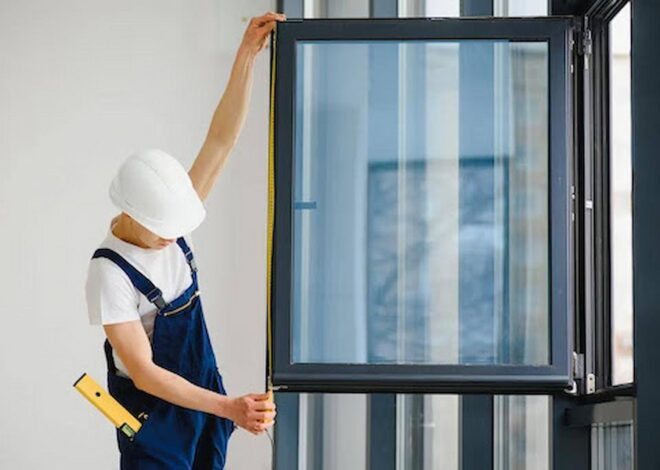
Why Double Glazed Windows Are Environmentally Friendly
Where environmental consciousness is becoming increasingly important, the choice of building materials and features can significantly impact sustainability efforts. Double glazed windows have emerged as a popular option not only for their energy efficiency but also for their positive environmental impact. This article explores why double glazed windows are considered environmentally friendly, examining their benefits and how they contribute to reducing carbon footprints.
Energy Efficiency and Reduced Carbon Emissions
Basically, double glazed windows imply two panes of glass, between which an inert gas is sandwiched that generally consists of argon or krypton. Such construction has more significant insulation properties compared to a single-pane window since there is reduced heat loss during winter due to the creation of a thermal break and minimised heat gain in the summer season. Because of this, buildings installed with double glazed windows require less energy for heating and cooling purposes and thus consume fewer levels of energy and offer reduced levels of emissions of greenhouse gases.
Thermal Performance and Heating Costs
The thermal insulation properties of double glazing windows are directly related to energy savings. These units will give a constant temperature during the year, avoiding heat transfer through the windows. Thus, there will not be much need for heating systems in winter and air conditioning systems in summer, reducing utility bills for household and commercial purposes. These financial savings, along with the reduced energy demand, make this initial double-glazed window investment pretty appealing from both an economic and an environmental perspective.
Apart from their thermal benefits, double-glazed windows reduce sound insulation and noise. Two layers of glass separated by a gas space barrier significantly reduce noise transmission from the outside to the inside and vice versa in noisy urban areas or along main roadways. By reducing external noise, double glazed windows Chesham can make an indoor environment quieter and much more comfortable, hence improving the occupants’ quality of life.
Improved Lifespan and Durability
Another important ecological advantage of double-glazed windows is their long service life. The superior material composition, combined with advanced manufacturing techniques, helps these windows withstand the challenges of the elements and provides years of excellent performance. Their longevity reportedly lowers the need for frequent replacements, thereby lowering resource use and waste resulting from frequent replacements. Long-lived building components, like double-glazed windows, reduce resource use and promote long-term stewardship through reduced resource extraction for replacements.
Reduced Demand for Heating and Cooling Resources
The energy saved from double-glazed windows contributes to other related environmental benefits of reducing total heating and cooling demand. The reduced demand puts less pressure on natural gas, electricity, and other fossil fuels that are used to produce energy. Consequently, fewer greenhouse gas emissions come out from the power plants. All these efforts pay toward mitigating and promoting a clean energy future in relation to climate change.
Conclusion:
In other words, double-glazed windows are one type of sustainable building feature from which a number of environmental benefits accrue, including enhanced energy efficiency, reduced carbon emissions, improved thermal performance, and durability—features that predominantly make buildings more environmentally responsible. With double glazing, house owners, architects, and builders are doing their part to help in this global effort to avert climate change and lessen the ecological footprint of buildings. The savings with respect to financial and energy use spell out why investing in these energy-efficient building materials is economically viable.
Double glazed windows, and other technologies like them, will likely enjoy incrementally wider adoption as increased focus falls on sustainability in terms of construction and renovation. With ease, double-glazed windows can be considered one of the cornerstones for green buildings, having a proven record of improving indoor comfort, reducing energy costs, and low environmental impacts. Incorporating these windows into building designs will mean stakeholders not only raise the value of property and the satisfaction of the occupants but also demonstrate commitment towards maintaining a clean environment. In other words, double-glazed windows are a perfect technical way of acquiring energy efficiency and environmental sustainability in the built environment


